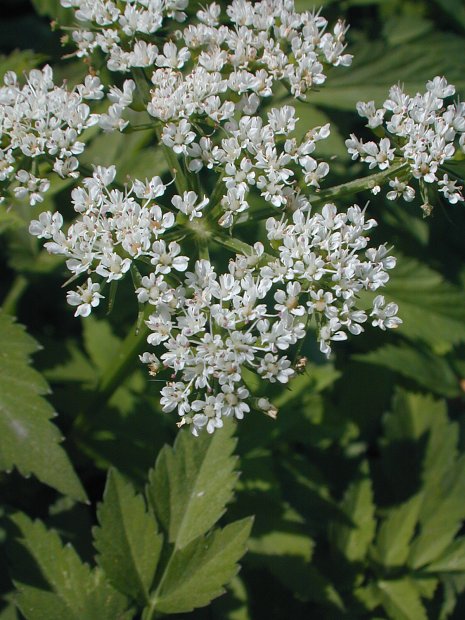
The upper leaf surface is light-medium green and glabrous, while the lower leaf surface is light green and glabrous. Usually the terminal ultimate leaflets have short petiolules (basal stalklets), while the lateral ultimate leaflets are sessile or nearly so. The primary rachises of the compound leaves and any secondary rachises are relatively broad and flattened on top, although they sometimes have narrow central grooves. The petioles are up to 6" long, becoming shorter as the compound leaves ascend the stems; they are relatively stout, angular, and glabrous or nearly so. At their bases, the petioles have membranous sheaths. Occasionally, compound umbels of flowers are produced oppositely from the middle to upper leaves; these umbels are 1½–2½" across and more or less flat-topped. Each compound umbel is divided into 8-14 umbellets; each umbellet has 12-22 flowers. The rays (basal stalks) of the umbellets are ¾–1½" long, light green, angular, and glabrous or nearly so. The pedicels of the flowers are 2-6 mm. long (up to ¼"), light green, angular, and glabrous or nearly so. At the base of each umbellet, there are several bracteoles (small bracts) that are up to 6 mm. long, light green, and linear in shape. At the base of each compound umbel, there are no bracts (or rarely one).
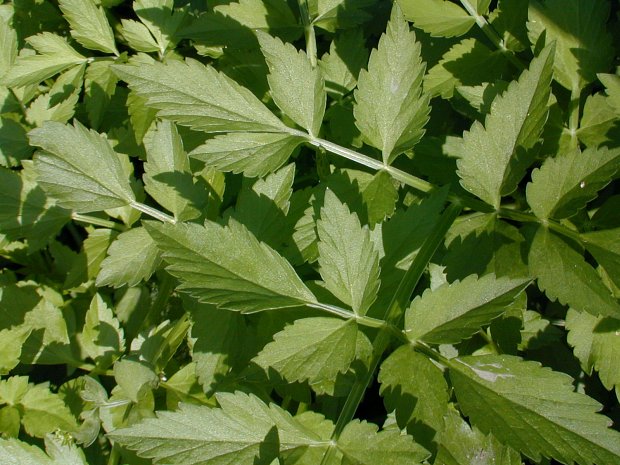
Each flower is 2-3 mm. across, consisting of 5 white notched petals, a light green calyx, 5 stamens, and a pistil with a bifurcated white style. The calyx has a shallow cup-like shape and it is nearly toothless. The blooming period occurs during the summer and early fall, lasting about 1½–3 months. During this time, the flowers bloom intermittently; they may, or may not, have a detectable fragrance. Afterwards, the flowers are replaced by immature green fruits. At maturity, these fruits are about 2.5 mm. long, 2 mm. across, and slightly compressed; they are broadly ellipsoid in shape and hairless. Each fruit divides into 2 seeds that have thickened longitudinal ribs. The root system is fibrous, stoloniferous, and shallow; both the fibrous roots and stolons are slender and white. This plant reproduces clonally by means of its stolons and it also reseeds itself. Colonies of plants are often formed.
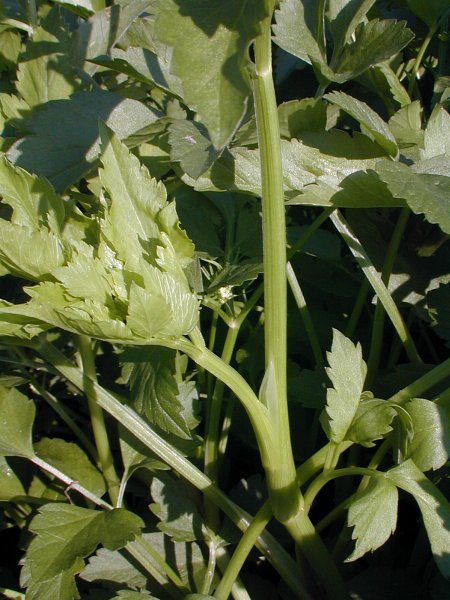
Cultivation: The preference is full sun to light shade, wet conditions (including shallow water), and soil containing sandy loam, silt, or mud. Growth and development are fairly rapid during the late spring and summer. Slow-moving water or stagnant water without waves enables this plant to establish itself. It will also develop on soil that is consistently moist. In some locations, this plant may be invasive. More flowers are produced in sunny locations.
Range & Habitat: The exotic Water Celery (Oenanthe javanica) has only recently appeared in Illinois (since about 2000), where it is rare (see Distribution Map). This plant is native to SE Asia, where it is widely cultivated as a vegetable and medicinal herb. It was introduced into North America by the horticulture industry, where it has been marketed as an ornamental wetland plant, an exotic vegetable, and medicinal herb. As a result, it has started to escape from cultivation into natural areas. In Illinois, habitats include shallow slow-moving streams and muddy stream banks. In SE Asia, it also occurs in soggy meadows, marshes, and along lake shores. Water Celery appears to be relatively aggressive and it will probably spread to new areas in the future.
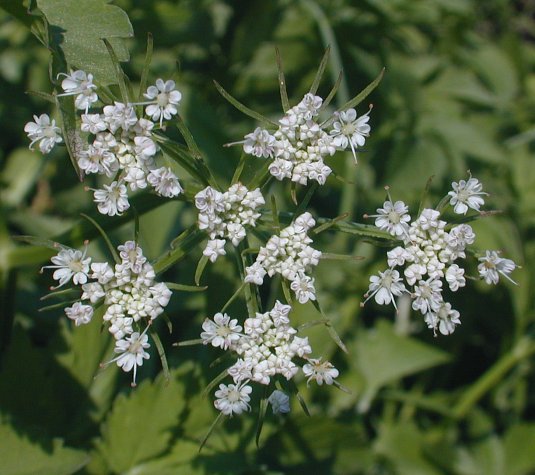
Faunal Associations: Like other species in the Carrot family (Apiaceae) that have umbels of small white flowers, the flowers of Water Celery (Oenanthe javanica) probably attract small bees, flies, wasps, and other insects. Both nectar and pollen are available as floral rewards. Because of its tendency to form dense colonies, Water Celery provides protective cover to various kinds of wetland wildlife, including aquatic insects, amphibians, and fish. White-tailed Deer are known to browse on the foliage of this plant (personal communication, John White). Koi Carp and probably other kinds of carp also feed on this plant when it grows in water. When it is grown on unpolluted ground or in unpolluted water, the foliage is non-toxic and it can be eaten safely by humans. The petioles of the compound leaves have a flavor that is similar to celery; their texture is more tender than stalks of celery (personal observation).
Photographic Location: Along a slow-moving stream at Meadowbrook Park in Urbana, Illinois, where this plant grows in shallow water and muddy banks. It has persisted at this location for 10 or more years. Originally, this plant was abundant toward the northern edge of the park, but it has migrated downstream in recent years. As of 2013, it was restricted near the southern edge of the park.
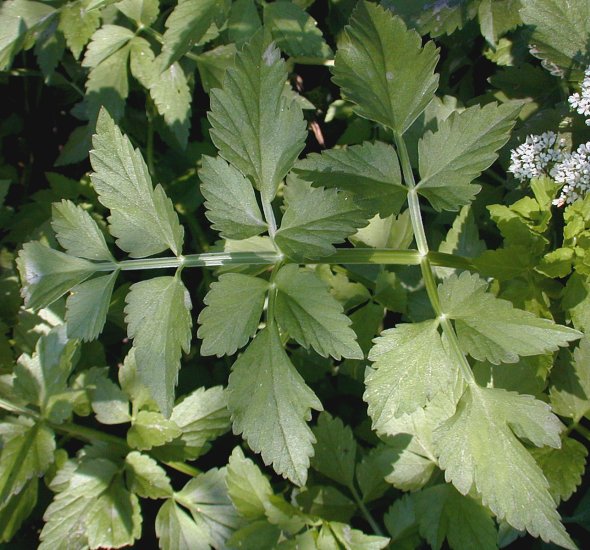
Comments: Distinguishing different species in the Carrot family can be difficult. Originally, this plant was incorrectly identified as Pacific Water Parsley (Oenanthe sarmentosa), but I have since changed my mind. Water Celery (Oenanthe javanica) can be distinguished from Pacific Water Parsley by its broader rachises that are flattened along their upper sides, and its broadly ellipsoid fruits have sides that are more curved. Pacific Water Parsley, in contrast, has more narrow rachises that are convexly curved along their upper sides, and its oblongoid fruits have sides that are more straight. Water Celery also resembles Leaf Celery (Apium graveolens secalinum) to some extent, however the compound umbels of flowers of this latter species lack both bracts and bracteoles. An uncommon native species, Low Water Parsnip (Berula erecta), also resembles Water Celery to some extent, but it has simple-pinnate leaves only. This latter species can be found in the northern half of Illinois.